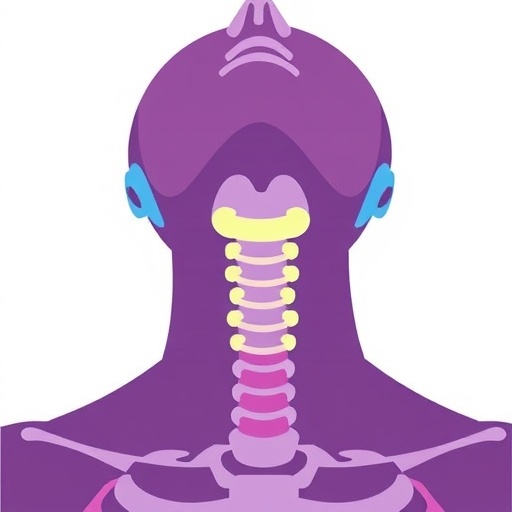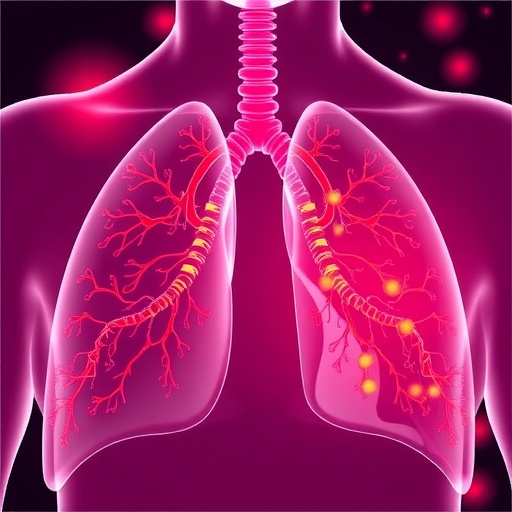
In a landmark advancement for thyroid cancer care, the American Thyroid Association (ATA) has unveiled comprehensive new guidelines for the management of adult patients with differentiated thyroid cancer (DTC), the most common form of thyroid malignancy. Published in the esteemed, peer-reviewed journal Thyroid®, these guidelines represent a major consolidation of the latest scientific evidence and clinical expertise, promising to redefine care standards for both clinicians and patients in this domain. The effort underscores the ATA’s commitment to evidence-based practice and multidisciplinary collaboration in addressing the complex challenges posed by thyroid cancer management.
Differentiated thyroid cancer, primarily encompassing papillary and follicular thyroid carcinomas, accounts for the majority of thyroid cancer diagnoses worldwide. Despite generally favorable prognoses, its management demands nuanced decision-making informed by a variety of clinical parameters, including tumor staging, risk stratification, and individual patient factors. The newly released 2025 ATA guidelines provide an exhaustive framework that spans the entire spectrum of care—from initial diagnosis and staging to long-term monitoring and the application of advanced therapies—thereby standardizing approaches based on robust data and clinical trial outcomes.
Central to the development of these guidelines was an ATA task force co-chaired by Dr. Matthew Ringel of The Ohio State University College of Medicine and Dr. Julie Ann Sosa from the University of California San Francisco. This expert panel brought together a diverse group of stakeholders, including endocrinologists, surgeons, oncologists, nuclear medicine specialists, radiologists, patient advocates, and systematic review experts. Such multidisciplinary engagement ensured that the guidelines are patient-centered while scientifically rigorous, incorporating up-to-date meta-analyses and carefully weighing treatment efficacy alongside quality-of-life considerations.
One of the hallmark features of the guidelines lies in their stratified approach to risk assessment and staging. Unlike previous protocols that often applied uniform treatment strategies, these new recommendations emphasize individualized patient profiles, incorporating genetic markers, tumor histology, and response to initial therapy. The guidelines advocate for precise use of imaging modalities—not only ultrasound and radioactive iodine uptake scanning but also advances in molecular diagnostics—to better delineate disease extent and guide tailored decision-making regarding surgery, radioactive iodine therapy, and systemic treatments.
Initial treatment paradigms receive a comprehensive reevaluation in the new directive. Recognizing the heterogeneity of tumor behavior and patient risk, the guidelines recommend a graduated surgical approach—from lobectomy to total thyroidectomy—based on risk stratification and patient preferences. Additionally, selection criteria for adjuvant radioactive iodine therapy have been refined to minimize overtreatment and related toxicities, reflecting evidence that smaller, low-risk tumors often do not benefit from such interventions. This nuanced prescription allows clinicians to balance therapeutic benefit with potential complications such as xerostomia and secondary malignancies.
Another critical advancement is the incorporation of dynamic risk assessment protocols into post-treatment surveillance. The guidelines advocate for regular monitoring through serum thyroglobulin measurements and neck ultrasound, adapting follow-up intensity based on initial response to therapy. This represents a shift away from rigid, protocolized surveillance schedules towards adaptable frameworks that optimize resource use and patient burden. The emphasis on patient-reported outcomes also signals a growing recognition of survivorship issues, including psychological well-being, long-term endocrine function, and secondary prevention.
Central to the updated guidelines is the attention paid to emerging systemic therapies for advanced and refractory differentiated thyroid cancers. Molecular targeted agents, such as tyrosine kinase inhibitors, are discussed in depth, integrating recent clinical trial data on efficacy and side-effect management. The document provides comprehensive guidance on appropriate patient selection and sequencing of these therapies, underscoring the importance of multidisciplinary teams to manage complex therapeutic regimens and mitigate toxicities through personalized care pathways.
Importantly, the guidelines address the disparities in thyroid cancer outcomes across diverse populations by recommending culturally sensitive care and emphasizing the importance of patient education. This approach aims to reduce barriers to care and ensure equitable access to diagnostic and therapeutic advancements. Furthermore, the document identifies critical gaps in current knowledge, calling for high-quality research on topics such as the impact of novel biomarkers, optimal duration of surveillance, and strategies to maintain quality of life in long-term survivors.
The publication of this monumental guideline in the ATA’s official journal, Thyroid®, amplifies its accessibility and scientific credibility. Thyroid® itself has a storied history as a leading outlet for multidisciplinary research on thyroid physiology and pathology, under the stewardship of Editor-in-Chief Dr. Anna M. Sawka. Its monthly issues regularly feature groundbreaking studies that inform clinical practice globally, making it an ideal platform for disseminating these pivotal recommendations.
The ATA’s leadership has expressed strong support for the guidelines, highlighting their potential to improve clinical outcomes and patient experiences fundamentally. Dr. Jacqueline Jonklaas, the ATA President, praised the task force for producing a “superlative clinical practice guideline” that is expected to set the standard of care for generations to come. Likewise, ATA Secretary and Chief Operating Officer Dr. Christopher McCabe emphasized that the guidelines exemplify high-quality, evidence-based medicine, providing clinicians with sound and thoughtful direction in managing thyroid cancer.
Beyond the strict confines of clinical recommendations, the guidelines also catalyze a broader conversation about the evolving landscape of personalized oncology. They exemplify the increasing role of precision medicine, integrating molecular insights and patient-reported data to redefine risk and therapeutic approaches. Such developments reflect the paradigm shift occurring throughout oncology where one-size-fits-all algorithms are being supplanted by individualized treatment plans that consider genetic, biochemical, and psychosocial factors.
The 2025 ATA guidelines also underscore the role of ongoing education and interdisciplinary collaboration, encouraging institutions and professional societies to adopt these principles rapidly. The ATA supports this through complementary resources, including Clinical Thyroidology®—a monthly publication translating complex research for clinicians—and VideoEndocrinology, which provides visual case-based learning. These platforms aim to ensure wide dissemination and practical uptake of the guidelines, ultimately improving patient outcomes worldwide.
In summary, the American Thyroid Association’s 2025 management guidelines constitute a watershed moment in differentiated thyroid cancer care. By synthesizing the latest scientific evidence across a spectrum of clinical scenarios, emphasizing patient-centered approaches, and embracing innovation in diagnostics and therapeutics, the guidelines offer a blueprint for optimized clinical practice. As thyroid cancer incidence continues to rise globally, such forward-thinking and meticulously crafted standards herald a new era of precision care that promises to enhance survival, reduce overtreatment, and improve quality of life for thousands of patients.
Subject of Research: People
Article Title: 2025 American Thyroid Association Management Guidelines for Adult Patients with Differentiated Thyroid Cancer
News Publication Date: 20-Aug-2025
Web References: Not provided
References: Not provided
Image Credits: Mary Ann Liebert, Inc., a Sage Company
Tags: adult differentiated thyroid cancer managementadvanced therapies for thyroid cancerATA task force on thyroid cancerbest practices for differentiated thyroid cancerclinical parameters in thyroid cancer treatmentcomprehensive guidelines for thyroid malignancyevidence-based thyroid cancer carelong-term monitoring in thyroid cancermultidisciplinary collaboration in thyroid cancerpapillary and follicular thyroid carcinoma managementtumor staging and risk stratificationupdated ATA guidelines for thyroid cancer





